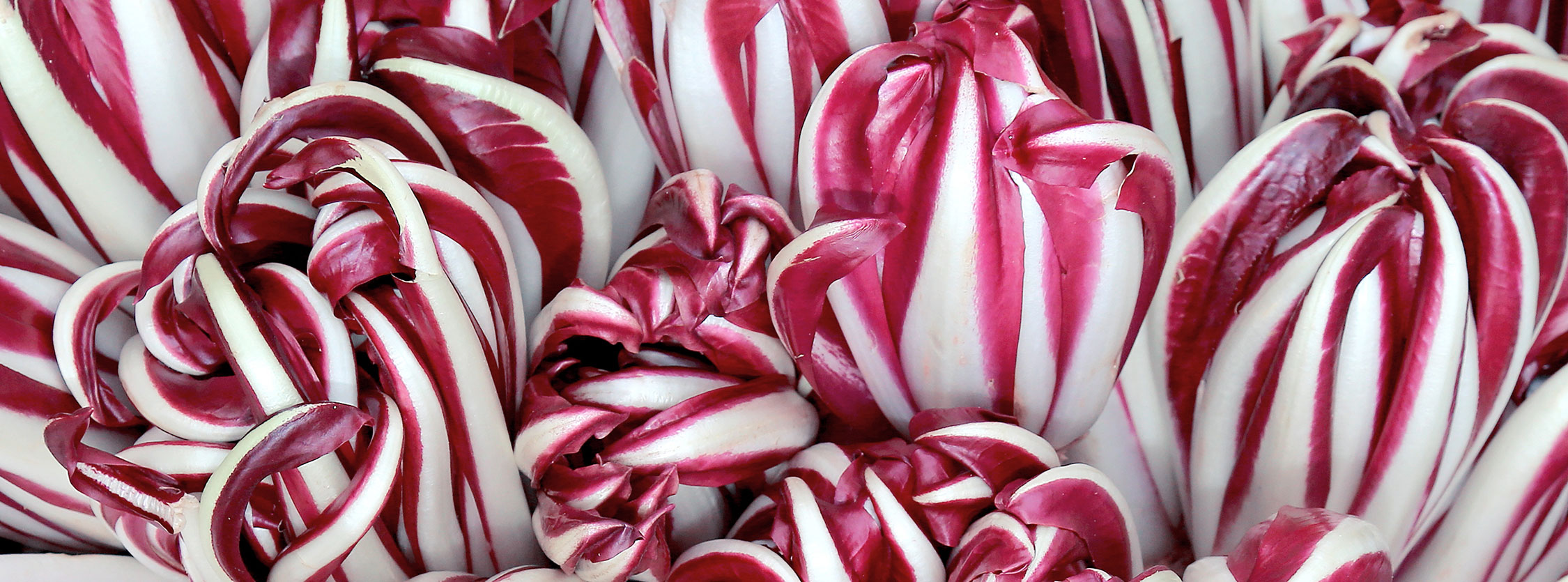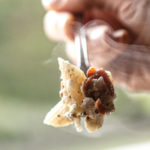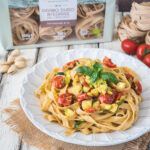

Autumn and winter are everything but deadbeat seasons. Indeed, they offer us unique delicacies like the fragrant mushrooms from our woods, wonderful pumpkins, Italian kale, artichokes… But there’s a vegetable particularly dear to us: Red Radicchio from Treviso, a crunchy and slightly bitter variety of chicory characterised by a dark intense purplish colour with white streaks. Red Radicchio from Treviso with the PDO label is one of our land’s outstanding products, acclaimed all over the world, and which can be enjoyed both cooked and uncooked: in salads, as the main ingredient of first and second courses, but also original desserts. With its characteristic bouquet of flavours, it is also suitable to aromatise beer and herbal teas.
Iconographic research conducted by Padua’s university has traced its cultivation back to at least the mid-16th century. The production process was probably refined only in the second half of the 19th century, thanks to nurseryman Francesco Van Den Borre, who designed the blanching technique – already used for Belgian chicory varieties – on his estate in Dosson, near Treviso. This wonderful vegetable found its final consecration in the 20th century, thanks to the first show devoted to producers of Red Radicchio from Treviso, created by Lombard agronomist Giuseppe Benzi under the Loggia dei Grani in Piazza dei Signori in Treviso.
But back to today. Among the two varieties, early radicchio is a slightly less valuable, has larger leaves and a more bitter taste. Late Red Radicchio from Treviso is instead more valuable due to the complexity of its production process, located – according to PDO regulations – in the towns within the provinces of Treviso, Padua and Venice. It must feature regular, even shoots with a good consistency; tightly packed leaves that tend to close the head at the top, of an intense wine-like red with slightly visible secondary veins; bitter and crunchy white dorsal midrib (main vein).
According to production regulations, the plants need to be picked from an open field from the roots; the outer leaves and any soil need to be removed. They are then tied into bunches or placed in wired or perforated cages. This is followed by the blanching stage, an essential and irreplaceable step to enhance the organoleptic properties and aesthetic qualities of radicchio. The heads are positioned vertical in large protected tanks and immersed in groundwater down to the area near the collar for the time required to reach the right ripening. The heads can thereby form new leaves that, with no light, have no or almost no chlorophyll pigments and highlight the intense red hue of the lamina. They lose their stringy texture, become crunchy and acquire a pleasantly bitter taste. After this forced period in water, late Red Radicchio from Treviso with the PDO label is ready for final finishing and sale.
Radicchio does not just taste good, it’s also good for you. It’s packed with antioxidants that counter cell ageing processes: these include anthocyanins (part of the family of flavonoids and the cause of the vegetable’s purplish hue), essential molecules for the health of the whole cardiovascular system. Consisting of more than 90% water, it’s a good source of vitamin A, vitamin C and B group vitamins. The latter are useful for our mental tropism and help us relax. Its depurative properties make it an ally in the event of digestive issues, while its considerable intake in soluble and insoluble fibre promotes bowel movements. Lastly, it’s also worth considering its calcium, potassium and iron content, which support the metabolism of bones, muscles and always keep our energy load well balanced.









To comment, you must accept profiling cookies. Modify your cookie preferences